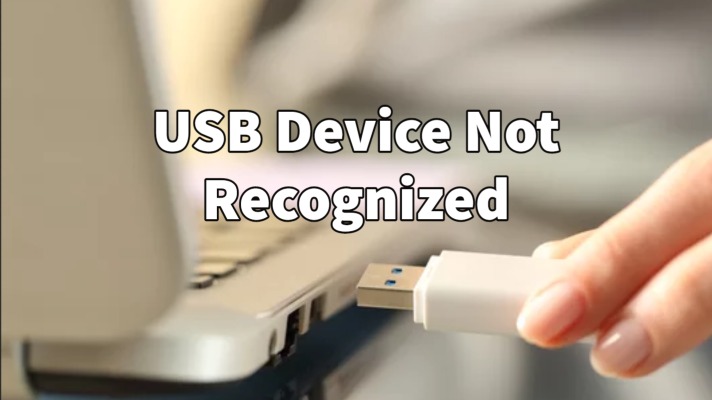USB is our most important need whether we want to connect a keyboard, mouse, or Pendrive. We can connect multiple external devices with just a single USB port. But lots of times users have to face errors whenever they reconnect the device again or when they connect a new device through the USB port.
If you’re also facing an error for your USB device because of any reason worry not we have a solution for you to diagnose this problem. After using multiple devices over the last decade we know how it feels when you’re in the middle of work and your USB port betrays you.
We tried multiple solutions to fix our USB and the following are the top ones we love the most.
1. Try using another USB device port
The first thing you should check is your hardware before going for software. In simple words try using your USB device in other ports or you can check your USB device on another pc if you have the option. It will ensure you where the actual cause occurs from. If your device is not working on another PC. It simply means you have to go to the device manufacturer for repair or if it’s your PC’s software-related issues you can check the below list to fix it on your own.
2. Use Windows Hardware and Device Troubleshooting
Troubleshooting is the windows pre-install feature. With the help of this feature, you can fix any small unknown issues in your window PC. Whenever you run troubleshooting, it will automatically find and fix all Searched issues, you just have to follow the below steps to use it.
Step 1. Go to the Controls Panel you can see the Search Option in the upper right corner, and type Troubleshoots for opening its settings.
Step 2. Now click on Customise A Device Under Hardware And Sound.
Step 3. Next type the Administrator Password and press enter to start troubleshooting. Once it’s finished scanning, it automatically tells you the cause of the USB problem.
Step 4. You can also go for Explore Additional Options to fix the unknown issue and remove the last malfunctioning USB device in your pc.
3. Update Outdated USB Driver
Windows provides updates for the latest drivers. The latest drivers come with different solutions for your USB device error problem. It’ll be more capable of fixing your errors than old drivers. You can easily update them with a click just by following some simple steps.
Step 1. Click on the Search Box and type Device Manager.
Step 2. Now click on Device Manager and start scrolling for the Universal Serial Bus Controllers Segment.
Step 3. Next tap on Universal Serial Bus Controllers to Expand and click on the Automatic Search option for a driver software update.
Step 4. Now windows will automatically search for the latest driver for your PC. Once the search is complete it’s also updated drivers to new ones.
4. Change USB Selective Suspend Settings
An error can also occur due to USB selective suspend settings in the power option. When you disable or change USB selective suspend settings, it automatically starts working on the direct power supply. Which makes it work more efficiently without any malfunction. Here are the following steps you have to follow for disabling the USB selective suspend settings.
Step 1. Start by clicking on a Windows option for a full list.
Step 2. Now click on the Power Option for Additional Power Settings.
Step 3. Next click on Change Plan Settings in a newly opened window.
Step 4. Go to change advanced power settings in the newly opened window for a new next step.
Step 5. Scroll down in the new window for USB Settings and click on it to make it expand.
Step 6. Now tap on USB Selective Suspend Settings to expand the options.
Step 7. Turn both options Disabled and click on apply and then click on Ok to save the changes you make.
5. Repair USB Root Hub Settings
Windows has the option to turn off the power supply on your USB device to save the extra battery. It might create a malfunction between USB ports. You can easily disable this setting just by following some simple steps.
Step 1. Go to the Device Manager and click on Universal Serial Bus Controllers for expanding the full USB list.
Step 2. Now click on USB Root Hub (USB 3.0) for opening the additional windows.
Step 3. From the new window go to the Power Management Tab. Uncheck the Allow The Computer To Turn Off This Device to save power and click Ok to save to settings.
6. Change Shutdown Settings
Windows has the features to start your pc faster after the shutdown. Sometimes your PC is started but your USB port doesn’t get its power. Which becomes the reason for USB-related errors. You can shut it down just by following the below-mentioned steps.
Step 1. Press the Window + R key on your keyboard for the Run Command.
Step 2. Now type Control on the run command and press enter for the new window.
Step 3. Go to search in the new window and type Power Options.
Step 4. Next click on Change What The Power Buttons do for the new window.
Step 5. Go to Change Settings That Are Currently Inaccessible for the new window again.
Step 6. Now Uncheck the Turn on Fast startup and click on save changes.
7. Restart Your Computer
Restarting is the simplest and most easy step you can take to solve all your problems at once. It’s also called a soft reboot because it makes all your settings work back to normal in most cases. Here are the steps you can follow to restart your pc.
Step 1. Click on Alt + F4 on your keyboard and click on the Down Key for the drop-down menu.
Step 2. Now select Restart and click Enter.
